The Dominican government made headlines when it ended birthright citizenship for children born in the D.R. To undocumented parents.
Watch the segment I field-produced, or read the full transcript, at PBS Newshour.
The Dominican government made headlines when it ended birthright citizenship for children born in the D.R. To undocumented parents.
Watch the segment I field-produced, or read the full transcript, at PBS Newshour.
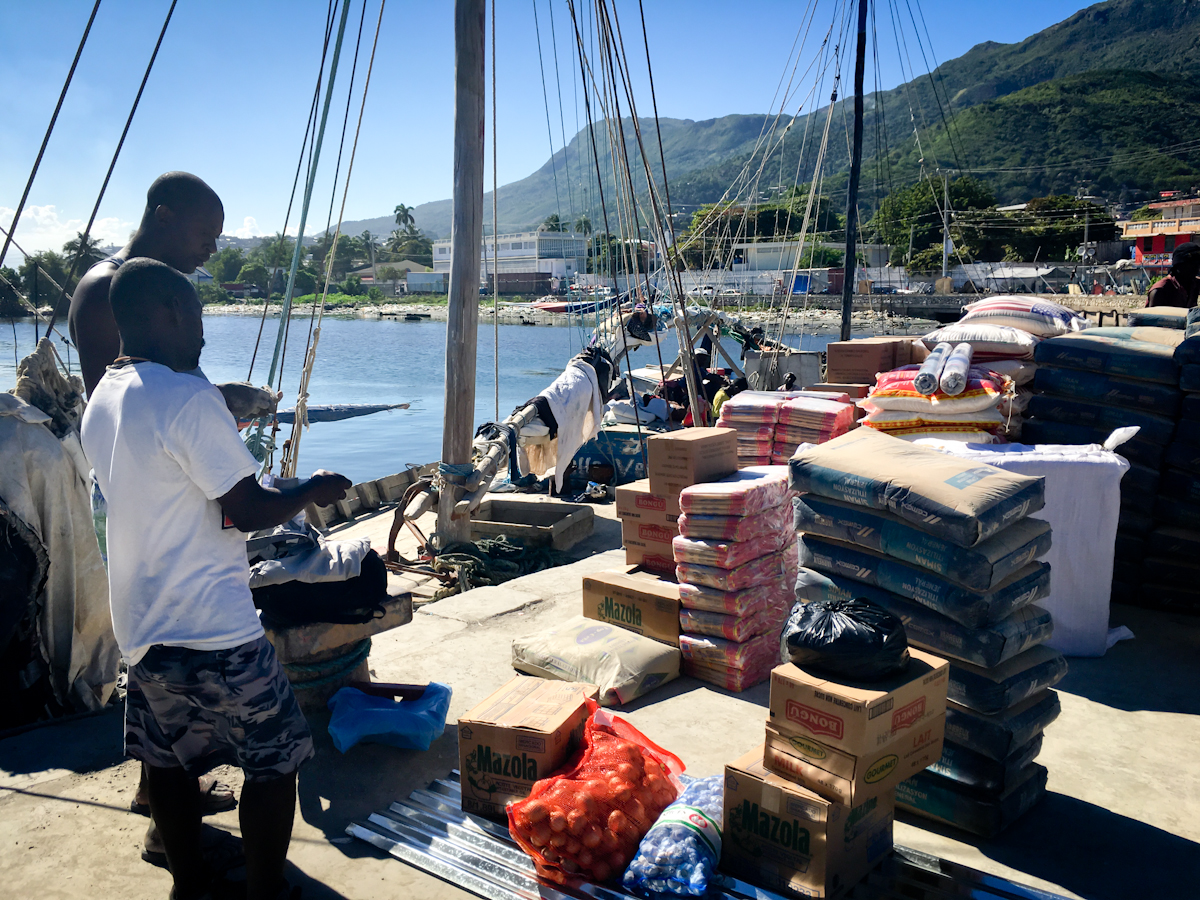
Jacob Kushner
A decade after Haiti’s 2010 earthquake, nothing symbolises America’s failure to help the nation “build back better” than a new port that was promised, but never built.
After sinking tens of millions of U.S. taxpayer dollars into an ill-advised plan to build a new seaport, the US quietly abandoned the project last year. It is the latest in a long line of supposed solutions to Haiti’s woes that have done little – or worse – to serve the country’s interests.
Read: The Guardian’s The Long Read

Supported by the Pulitzer Center.

Simon Maina
Kenya’s penal code punishes acts “against the order of nature”—usually interpreted as sex between men—with up to fourteen years in prison. It also prescribes up to five years in prison for “gross indecency with another male person,” which is often interpreted as other, undefined sexual acts between men. Worldwide, at least seventy nations—more than a third of all countries—still outlaw homosexuality, and it remains illegal in more than thirty of the fifty-four African countries.
L.G.B.T. activists in Kenya are taking on these laws. Changing a society’s values would take generations, they reasoned, but striking down an unjust law could be accomplished in just a few years. Read: The New Yorker
Can cities function without a government? In Canaan, Haiti, residents give it a try.
Nine years ago, Canaan 1 was little more than a nameless, hilly swath of land patchworked by boulders and cinder blocks marking where people hoped to one day see proper houses, a hospital, a school, a police station and a basketball court.
Today, the neighborhood is one of many rapidly expanding areas of Canaan, Haiti’s newest city – named for the biblical promised land – home to between 280,000 and 320,000 people.
“We wanted to show the state who we are – that we can put down more than just one or two dollars here,” says Evenson Louis.
Read: U.S. News & World Report
Reporting for this story was supported by the Pulitzer Center.
Without titles, residents risk losing any investment they make and cannot use their property as collateral
CANAAN, Haiti – On a street of rocks and white dust in the centre of one of the world’s newest cities, Alisma Robert pointed to an array of electric cabling strung between rickety wooden poles.
“It wasn’t EDH that built that pole,” said Robert, referring to Haiti’s national electricity provider.
“It was us.”
Nearly everything in the city of Canaan, which was founded in 2010 after a catastrophic earthquake, was built by residents without government help.
After waiting two years for electricity, Robert and his neighbours collected money from each household, erected the wooden poles, and wired up the cables to the house of a family who were connected to the grid.
“I’m a citizen – but not for the moment. I don’t have the benefits of a citizen. We don’t have drinkable water … No public toilets. The government doesn’t do anything for the people who live here.”
Read the full story at Reuters PLACE. Funding for this story was provided by the Pulitzer Center.

Jake Naughton
A surprising turnaround for LGBT Africans in a most unlikely place
Since 2009, Uganda has made international headlines as one of the world’s most dangerous places to be gay or transgender. That year legislators and religious leaders first championed an anti-homosexuality bill to criminalize gay sex and marriages, even if they take place abroad, and obligate Ugandans to report them. “Aggravated homosexuality,” including repeated offenses, was to be punished with death – later amended to life in prison.
And yet, today many rural LGBT Ugandans are finding ways to fit into traditional family and community structures – and without always having to entirely hide their identities, either. Rural Ugandan towns might be the last place you’d expect to see LGBT acceptance. Cities are often assumed to be more tolerant, where strength in numbers allows people to advocate together.
But in places like Mbale, where neighbors all know one another, prejudice is often no match for personal relationships. By adapting to, rather than rebuking, traditions and societal norms, some rural LGBT Africans are achieving a level of tolerance that just a few years ago seemed unthinkable.
Read: The Christian Science Monitor

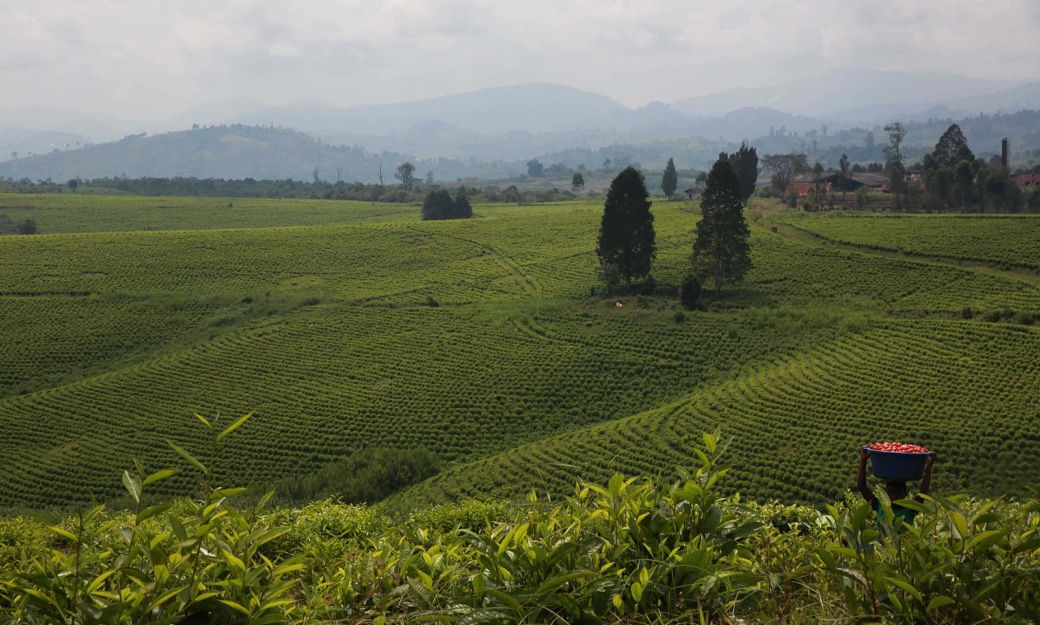
North Kivu, DR Congo | A woman going through a terraced tea field. Farmers in places like Congo who see cannabis as a profitable, stable crop must grow it at their peril. | Photo MONUSCO / Abel Kavanagh
Some of eastern Congo’s small-scale farmers are benefiting from a surprising—and illegal—crop.
Cannabis has become a major source of income for tens of thousands of farmers in Congo’s unstable east. It isn’t hard to see the appeal. “Cannabis (is) a robust plant which is easy to grow, requires little labor outside of harvesting and drying, yields several harvests per year, and can be harvested as early as six months from sowing,” writes Ann Laudati, a visiting professor at the University of California, Berkeley, who has interviewed more than 100 cannabis farmers in eastern Congo. “They’re making a living off it,” said Laudati. “They’re not getting rich, but they’re surviving.”
Congo isn’t alone. “The highest levels of cannabis production in the world take place on the African continent,” according to the UN. In 2005, Africa produced an estimated one-fourth of all global cannabis. In 2005, seventeen African countries reported that cannabis use was on the rise, including Congo. Be it by land or by sea, the drug also makes its way outside Congo’s porous borders. Quite possibly it’s what’s being smoked by western expats and humanitarians in African cities as far away as Nairobi.
But there’s one major factor limiting the crop’s proliferation: Cannabis is illegal in Congo, as it is in almost every African country. Since 2011, there have been more cannabis seizures in Africa than anywhere else in the world. Africa’s crackdown on cannabis reflects an international narrative that blames cannabis for all manner of the continent’s ills–the product of a century of European and U.S. pressure meant to stop it. According to the RAND Corporation, “in no Western country is a user at much risk of being criminally penalized for using marijuana. “ At a time when the United States is rapidly decriminalizing marijuana at home, it continues to endorse a narrative that demonizes the drug abroad.
Read the full article at Columbia Global Reports.
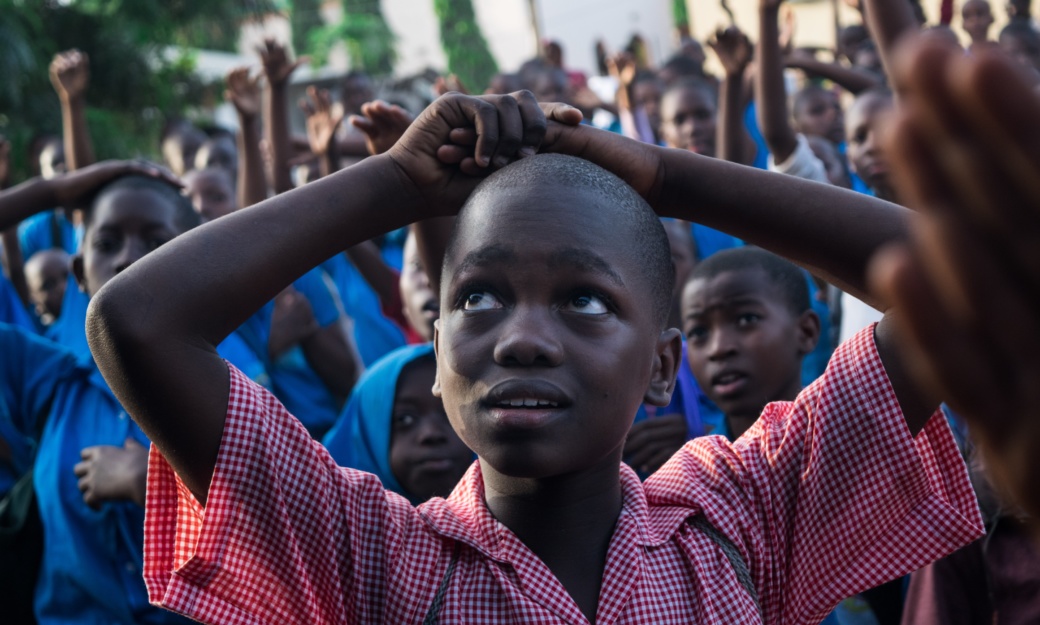
School children in Malindi, Kenya, February 2018. Photo by Ian Ingalula, Creative Commons.
Bridge International Academies was conceived in 2007 to be the McDonald’s of global education, promising to better educate poor students using Nooks and standardized curriculums for as little as $6 to $7 a month. Using tablets and standardized curriculums in each country, Bridge operates more than 520 schools, teaching some 100,000 students in Uganda, Kenya, Liberia, Nigeria and India. It’s currently expanding in Asia with dreams of reaching an ambitious 10 million students across the world by 2025.
But Some African parents may be uneasy about the idea of a western-conceived company disrupting something they hold so dear: control over their children’s education. Bridge threatens to globalize—or perhaps, to westernize—the sector on which many Africans bank their families’ futures.
Read the full story at Columbia Global Reports.

Christopher Furlong/Getty
In a nation known for minerals, a controversial crop is on the rise.
Before he started growing weed, Koti spent his days digging holes and tunnels, mining for morsels of gold. He would smoke weed — or bangias he calls it — to overcome his fear of the darkness that he faced underground. As a teen, he saw a tunnel collapse, trapping five fellow miners — only one was rescued. “It’s dangerous,” says Koti, of the illegal minerals trade that many eastern Congolese families depend on. “People were dying.”
The tragedy frightened him, but with no other source of income, he was back at the mine the next day. Then, in 2007, a foreign mining company kicked Koti and the other small-time miners off the land. With no other job, he bought cannabis seeds from a neighbor, planted them and, six months later, harvested a crop of cannabis that measured in the kilos. “I had no other job,” says Koti, who asked that his real name be withheld out of fear of authorities. “So I decided to start growing marijuana.”
The Democratic Republic of Congo, Africa’s second-largest nation by area, is known for nefarious trade in copper, coltan, cobalt, tin and other minerals. But now, tens of thousands of Congolese like Koti are setting their sights on a different sort of illegal resource: cannabis. The United Nations estimates that Africa produces 10,500 metric tons of cannabis — a fourth of all the marijuana in the world. Between 27 million and 53 million Africans use the drug, making up about one-fourth of all weed users worldwide.
But while cannabis farming comes without the physical fears that accompany mining, it carries its own share of risks, wrapped in politics from across the Atlantic. Decades of U.S. and international pressure are a key reason why cannabis cultivation is illegal in Congo. In 1961, the U.S. voted in favor of the U.N. Single Convention on Narcotic Drugs, which added marijuana to the list of drugs that were banned internationally. The way to solve America’s drug “problem” was by pinching off the global supply, or so the thinking went.
Farmers can’t receive international aid to grow an illegal crop. It also leaves them vulnerable to harassment from corrupt police officials.
 The penalization of cannabis in Congo is endorsed by the U.S. at a time when many states are decriminalizing the drug at home. In Afghanistan, the U.S. has funded “alternative livelihood” programs to shift Afghan farmers away from cannabis. And in 2005, the U.S. vetoed an international attempt to “reschedule” cannabis as a less dangerous substance — a move that could have opened the doors to deregulation.
The penalization of cannabis in Congo is endorsed by the U.S. at a time when many states are decriminalizing the drug at home. In Afghanistan, the U.S. has funded “alternative livelihood” programs to shift Afghan farmers away from cannabis. And in 2005, the U.S. vetoed an international attempt to “reschedule” cannabis as a less dangerous substance — a move that could have opened the doors to deregulation.
Read the full feature at OZY.
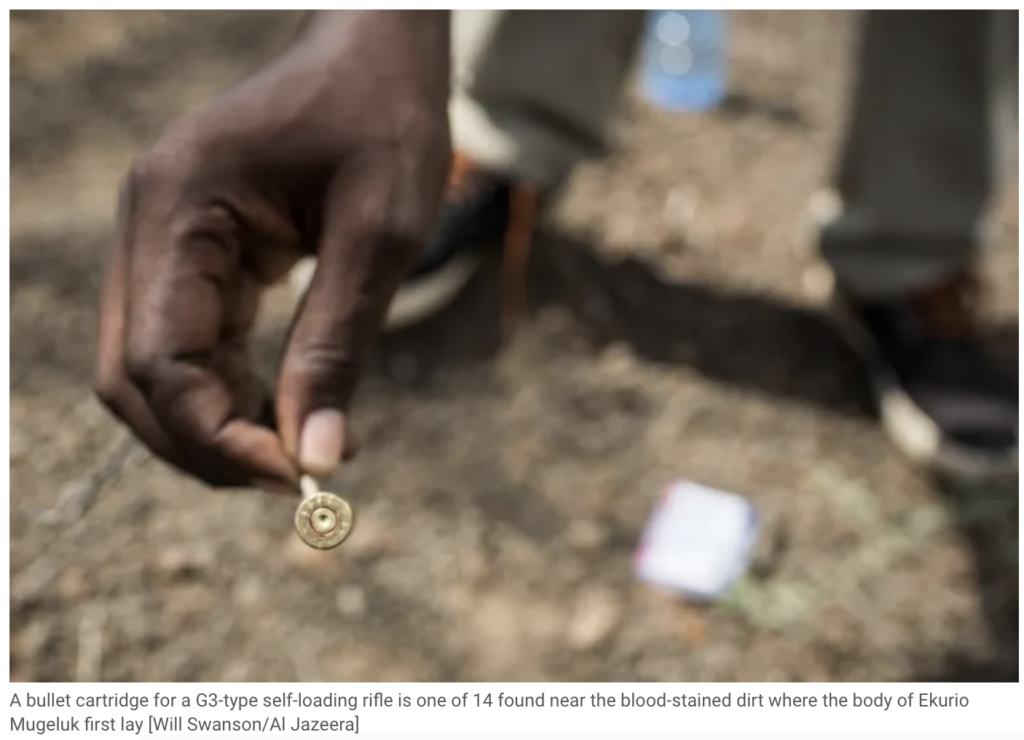 On the trail of police who stormed a village, burned down homes, stole livestock – and murdered an 80-year-old man.
On the trail of police who stormed a village, burned down homes, stole livestock – and murdered an 80-year-old man.
One May afternoon along a dirt road in a remote swath of Kenya’s Baringo County lay the remains of an elderly man. Wild animals had eaten his flesh, torn off some of his limbs, and dragged his body – now mostly bones. A purple shawl and a yellow football jersey clung to the skeleton.
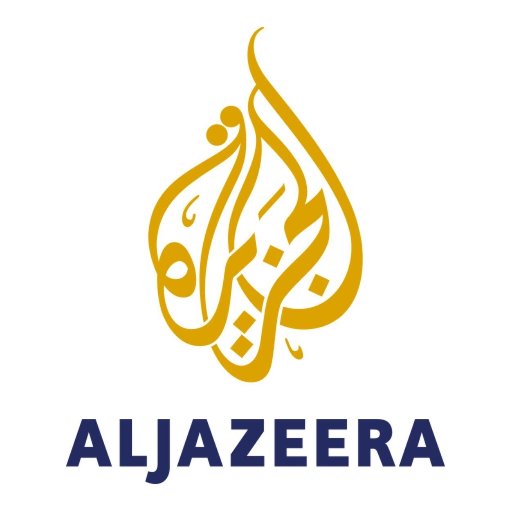 Witnesses say nine days earlier, several truckloads of police officers raided their village, burning their huts and stealing their goats. Officers then threw rocks at the elderly man who had tried to escape. They loaded him onto a truck, dumped him by the side of the road and shot him.
Witnesses say nine days earlier, several truckloads of police officers raided their village, burning their huts and stealing their goats. Officers then threw rocks at the elderly man who had tried to escape. They loaded him onto a truck, dumped him by the side of the road and shot him.
Reporting by Al Jazeera corroborates witnesses’ accounts that on May 9, Kenyan police murdered 80-year-old Ekurio Mugeluk and left his body to the wild.
Read the full investigation at Al Jazeera. Reported with Anthony Langat and Will Swanson.
Cornelius said the drive to Arabal would take an hour, but it’s been more like three. Already a full day’s journey from Nairobi, we chanced that by dark we could reach the Arabal river and make it back to the town of Marigat to sleep. But now the sun is inching westward and our car is running out of gas.
This isn’t a place you want to be stranded for the night. Baringo County is in the midst of a war over livestock. A severe drought has forced Pokot herders to drive their cows and goats from the dry flatlands up into the beautiful mountains above Lake Baringo in search of grass. But this land is inhabited by Tugen, and the Tugen are struggling to feed their own livestock as it is.
In central Kenya, grass and vegetation can be a matter of life and death, and not just for the animals. Pastoralists depend upon milk and meat for their livelihoods. Deprived of that income, entire communities can become food insecure. For many families, livestock are their only assets: they have no bank accounts, no land to farm.
Combine those stakes with the fact that experts believe there are 530,000 to 680,000 guns in circulation among civilians in Kenya. Guns have long been traded across Kenya’s porous border with Somalia, but some have recently been traced to Uganda and South Sudan. Most herders who carry them do so for self-defense—to protect their animals from raiders. But others use them to raid.
Some of the Pokot who have crossed into the administrative region of Arabal this year fall into the latter category. Since the drought began late last year, there have been dozens of shootouts between Tugen, Pokot, and the police. Thousands of heads of livestock have been stolen, though just how many thousands is anyone’s guess.
Survivors of these shootouts speak of the Pokot as if they were immune to bullets, as if they were sharpshooters who never missed, as if their ammunition were infinite. But survivors are hard to find.
Read the feature story at Roads & Kingdoms. Reported with Anthony Langat, photos by Will Swanson.
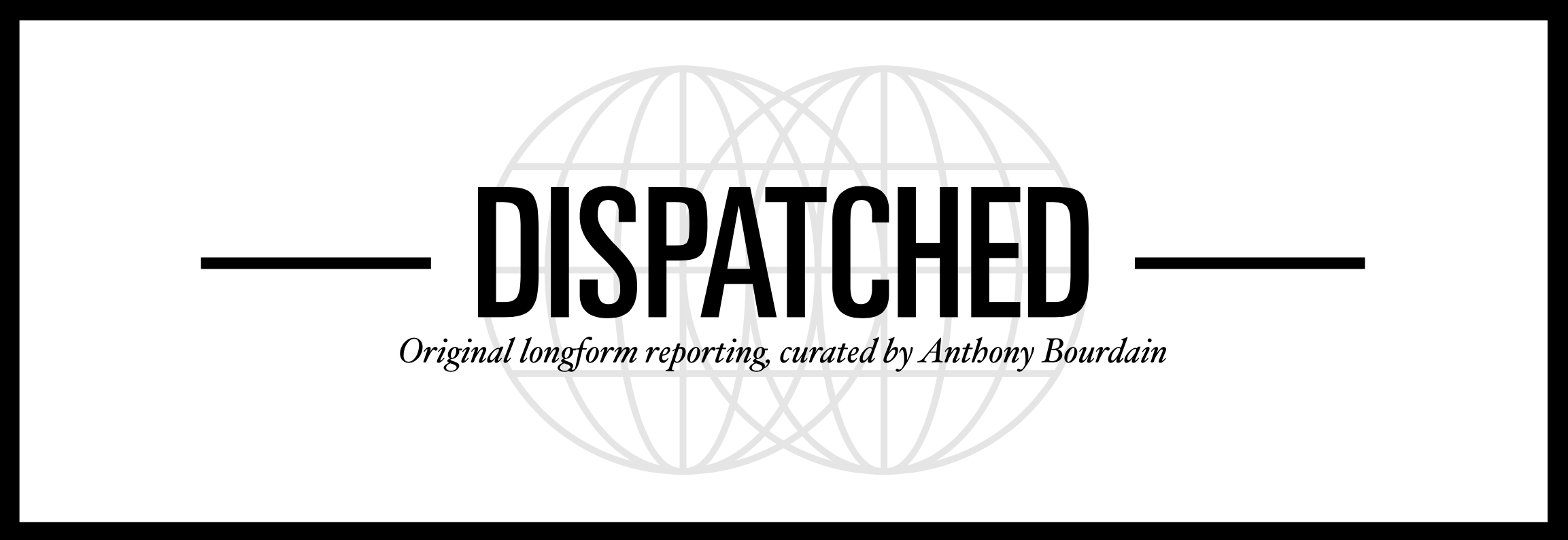
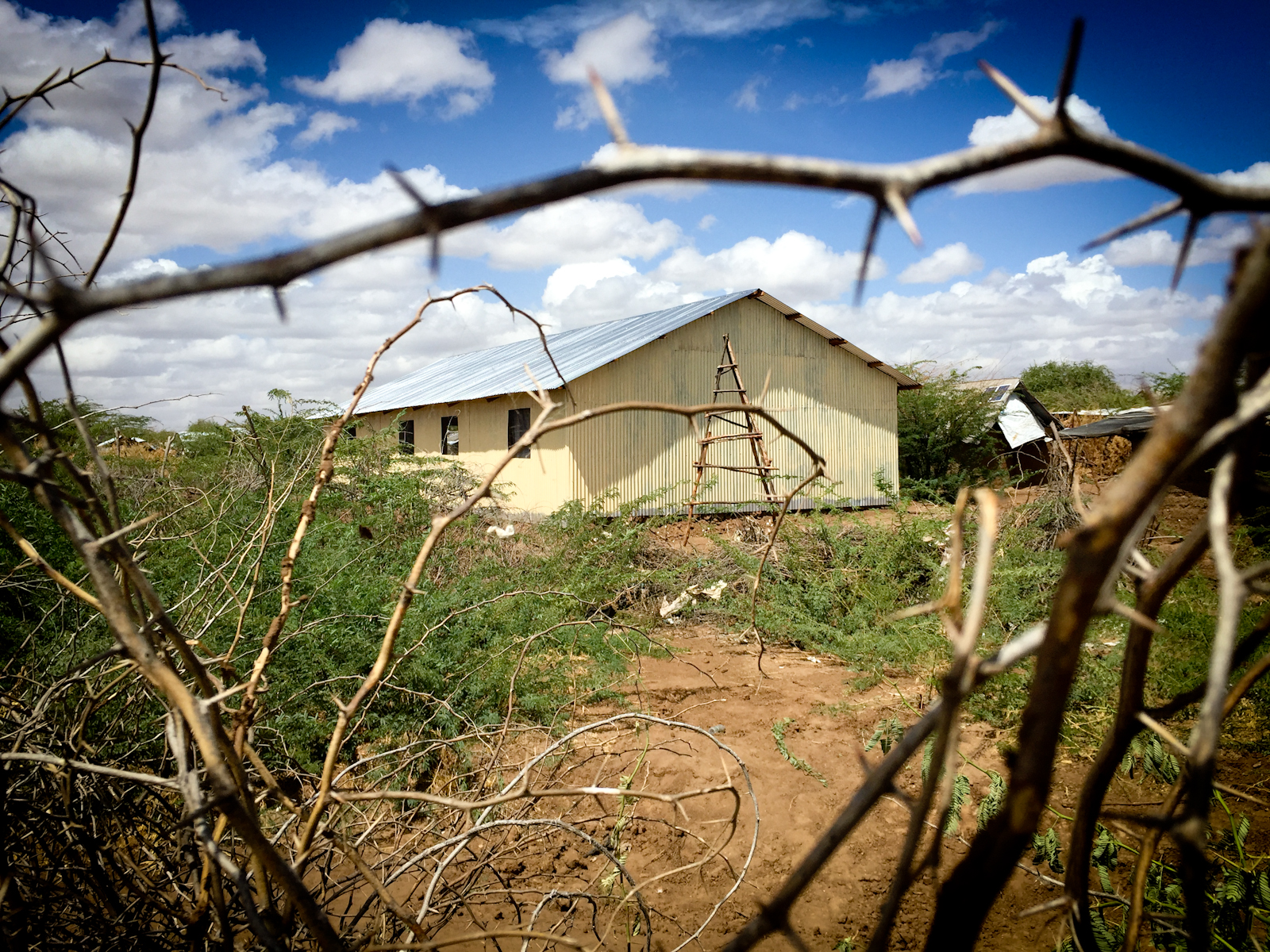
/Jacob Kushner
Inside Kakuma, Kenya’s 25-Year-Old Refugee Camp
In 1992, the U.N. formally recognized Kakuma as a refugee camp — a temporary shelter. A quarter-century later, Kakuma hosts more than 150,000 refugees — victims of all manner of East African calamities, from Ugandan homophobia to political unrest in Burundi. Presently, it is filling up once again with people fleeing civil war in South Sudan.
Long before the Syrian civil war, before millions of people began fleeing to camps in Turkey, Jordan, and elsewhere in search of safety, Kakuma was something of an icon in the global refugee crisis. Today, it stands as a solemn reminder of the permanence of humanity’s displaced masses.
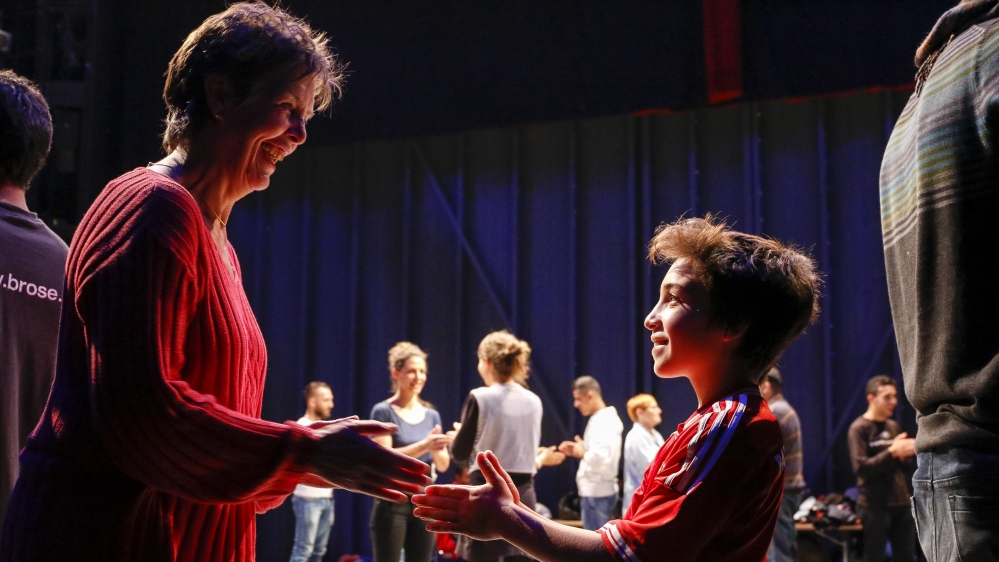
Refugee youth partake in the international cafe’s theatre activities and perform skits based on their own experiences [Daniel Koch/Staatsschauspiel Dresden]
Here, immigrants tell stories about their homelands and laugh with German volunteers about cultural differences. Graffiti covers the walls, a sign on one wall reads, “Refugees welcome. Bring your families.”
They do. Children play table football, while teenagers – mostly boys – lounge on couches.
But this particular space, known as the “international cafe”, rests in an uncanny location.
Dresden, the capital of Saxony, is a stronghold for Germany’s anti-immigrant politics. Each week, thousands of supporters of the right-wing, anti-Muslim, anti-refugee movement PEGIDA gather to demonstrate against Germany’s liberal policies towards asylum seekers.
They chant that refugees should “go home” and denounce what they see as the Islamisation of Germany. Refugees often take care to avoid central Dresden on Monday nights out of fear they’ll become targets of the protesters’ angry speech, or worse.
Read the full story at Al Jazeera. This is the final story in a 7-part series.
Laikipia is located in central Kenya in the heart of the Great Rift Valley. It is home to one of East Africa’s largest concentrations of wildlife, from elephants to rhinos and buffalo to packs of wild dogs. An estimated 86,000 tourists visit each year to explore parts of the 32 vast conservancies and ranches that occupy a third of Laikipia County. Many adore Laikipia because it is so remote, situated far from the more popular safari parks that flood with tourists during the dry seasons.
Over the past seven months, however, the peace for which Laikipia is known has given way to a war over grass. A severe drought that began in the fall of 2016 caused nearly 3 million people in northern Kenya to need emergency food assistance. The lack of vegetation caused herdsmen to drive thousands of cows, goats, and sheep southward from nearby counties to where, quite literally, the grass is greener—on private conservancies and ranches.
“Pretty much every wild animal we have has been shot by these herders,” says Sean Outram, manager of Sosian Ranch. Packs of wild dogs—the most endangered large carnivores in East Africa—have been all but wiped out. Dozens of Laikipia’s estimated 5,000 elephants have died in the conflict, as have hundreds of buffalos. Fifteen elephants and at least 12 giraffes were killed on Sosian alone. “Anything that moves has been shot—some of it for the skins, some of it for trophy. Some just because they wanted to shoot it,” says Outram.
There may have been something deeper to the herders’ resentment. Many of Laikipia’s conservancies are owned and managed by white people—Kenyan descendants of British colonialists or immigrants from Europe and other African countries. People like Tristan Voorspuy. “The tribesmen who murdered Tristan Voorspuy saw not a farmer whose life had been spent in Africa and who provided employment for scores of local people, but instead just a rich, white interloper on a horse who challenged them on land they demand to claim as their own,” wrote Max Hastings, a former safari tourist of Voorspuy’s, in the Daily Mail. “Unless its government shows the will and means to restore peace to Laikipia, which means expelling this murderous throng of invaders by force of arms, the nation’s future stands at risk, and its priceless wild heritage faces the prospect of near-extinction.”
Read the feature story at Outside Magazine.

Jacob Kushner for Al Jazeera
A lawyer and his family fled death threats in Pakistan and came to Germany only to face terrorism. Now, they’re being forced to go home.
Salzhemmendorf, Germany – Late one summer night in this quiet village, a Molotov cocktail came flying through the window of the apartment where a Zimbabwean refugee and her three young children lived.
In the apartment next door, an asylum seeker from Pakistan who calls himself Mr Khan heard nothing. He was sitting at his computer with his headphones on, watching videos on the internet with news from Karachi. He and his family had fled Pakistan for Europe in 2012 after some of his colleagues – lawyers who were Shia Muslim – had been murdered by Sunni Islamic extremists.
When he heard a loud banging on his apartment door, he opened it to find a police officer, who ushered him and his family outside. The building smelled of smoke, and Khan surveyed the wreckage: The Molotov cocktail had destroyed the bedroom it was thrown into. It was the room in which the woman’s 11-year-old son usually slept on a mattress on the floor. By chance, he was sleeping in his mother’s room that night, which may have saved his life.
Outside, “I heard the sound of the fire brigade,” Khan said. “If they did not come, this whole building could have been finished.”
After Khan’s building was attacked by xenophobic Germans, he wondered whether Germany would accept their asylum applications, and allow them to stay.
“Tomorrow, I don’t know what will happen,” Khan said. “Maybe Germany will say, ‘Out!'”
In fact, it did.
Read the full story at Al Jazeera. This is the 6th article in a 7-part series.